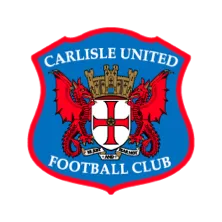Keeper training images
Collapsing dive+ Used when the ball is driven low and close to the feet, when there’s not enough time to move the feet
+ Bring the foot nearest the ball out of the line of the ball
+ Move like a pendulum, everything moves together, hands/head/feet
+ Stopper and trapper - if catching, stopper is the hand closet to the ball because it stops the ball and trapper is the hand furthest away from the ball because it traps the ball in place
+ Try to attack the ball away from the body, then take it early
+ Strong wrists & soft palms
+ Elbows should be slightly flexed so palms act as a shock absorber
+ Three barriers – hands, head and ground
+ Recovery lines or recovery save if ball is spilled/parried/deflected
+ Two priorities – defend the goal or defend the space in behind the defenders
+ Use pendulum leg to get back up
Low diving save
+ Used when ball is coming low across the ground and wider then a collapsing save
+ Take a step forward towards the ball, trying to attack the ball early so you take it away from the goal - you must take a step with the foot nearest the ball
+ Move like a pendulum – head/hands and feet all move at the same time
+ Stopper and trapper with strong wrists and a big palms - ‘W’ shape should be made on the ball
+ Elbows are tucked in so injury does not occur
+ Strong wrists and soft palms
+ Impact must be made on the side of the body and shoulder
+ Three barriers on the ball – hands, head and ground
+ Once caught have your eyes looking at the ball
+ To get back up use pendulum leg (getting up without using your hands)
+ If spilled – try to parry/deflect ball to safety
Aerial step and dive save
+ Used when ball is coming in the air and within a step of the goalkeeper
+ Take a step forward towards the ball, trying to attack the ball early so you take it away from the goal - you must take a step with the foot nearest the ball
+ Move like a pendulum – head/hands and feet all move at the same time
+ Stopper and trapper with strong wrists and a big palms - ‘W’ shape should be made on the ball
+ Elbows are tucked in so injury does not occur
+ Strong wrists & soft palms
+ Impact must be made on the side of the body and shoulder
+ Once caught ball pose like somebody is about to take a photograph, by doing this you take the pace out of the ball and take the ball to ground gently
+ Ball must be taken to ground once caught
+ Three barriers on the ball – hands, head and ground
+ Once caught have your eyes looking at the ball
+ To get back up use pendulum leg (getting up without using the hands)
+ If spilled - try to parry/deflect ball to safety
Skip, step and dive save
+ Used when the ball is going a lot further away from the goalkeeper and a normal step save is not enough
+ Normally top/bottom corner saves, or just inside the post
+ Same technical aspects as before but now we are looking to get a skip before we step
+ Again we skip with the foot nearest the ball then follow that up with a step and then the full stretch dive
+ As you take your step make sure you get low as this enables us to load the quadricep in preparation for high diving save
+ The hand position is the ‘W’ position
+ Strong wrists and soft palms – if we parry we then need a big palm
+ Eyes must be focused on the ball with elbows flexed
+ For the ball that is going over the head/above the body we use the highest hand
+ For the ball that is going away from the body we use the longest hand
+ If you catch we are looking to cushion the ball on impact with the ground
+ If you parry we are looking to parry to safety using a big palm
Parrying
+ Parrying the ball is recommended when the pace of the shot is so great that the keeper is not only able to catch cleanly but also difficulty in accurately diverting the ball to safety
+ If this is the case then you should use the heels of the hands
+ This enables the ball to travel a good distance and is not easily controlled by opposition due to the pace of the ball
Deflecting
+ Deflecting the ball is recommended for well driven shots which are difficult to catch
+ Here the goalkeeper looks to make contact with the fingers so the ball can be diverted around the post or out of play
+ Sometimes keepers touch can be too strong which allows the ball to come back into play
+ Alternatively they will flick the wrist too much which may divert the ball into the net
